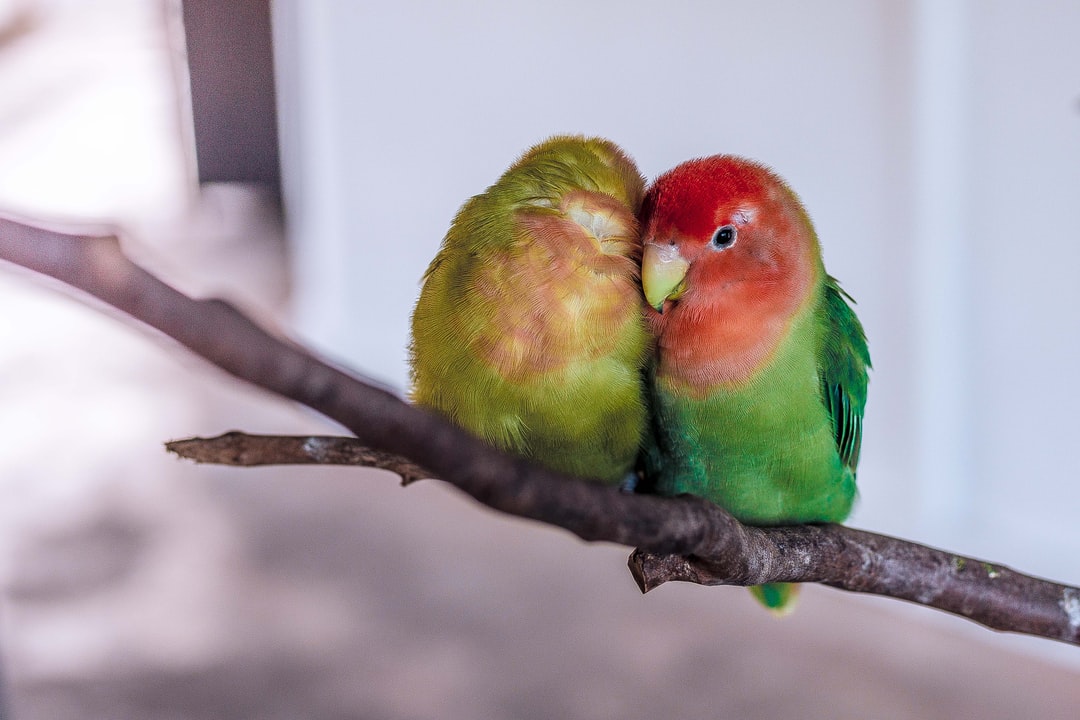1. How many lovebirds do I start with?
We recommend that you start with a single pair , and then gradually increase the number of copies. Check first how much time and money you have to invest in caring for the parents and feeding the little ones, to assess whether you are willing to continue raising lovebirds. Remember that inseparable birds are quite noisy birds , which obviously worsens as the number of birds increases and can annoy some neighbors. Another important factor to consider is whether you can find good homes for all the youngsters.
2. How should the cage be to raise lovebirds?
Before acquiring your lovebird partner, you must have a large cage for birds , with enough space so that the birds can fly without colliding with any object. In addition, there should be space to install a nest for lovebirds, different perches or branches and some toys for birds , very necessary to make the life of your lovebirds a little more interesting. If they have enough space, the inseparable will not be stressed and will perform their task as parents much better.
3. How to differentiate the males from the females of lovebirds?
Lovebirds are ready to breed when they are one year old. Some may be sexually mature a little earlier, but wait until they are at least a year old. Males and females are practically no different physically from each other , but you can identify them quite well by their behavior. Mature females can carry nest-building material under their wings without dropping it, while males are able to regurgitate food as a display of affection. Do not trust the pairs that form naturally, they can be birds of the same sex.
4. How are the nests to raise lovebirds?
Clean and disinfect the nest very well before placing it in the bird cage. There are many types of nests made especially for lovebirds . Those that are for parakeets are too small and when the chicks grow they are very tight and they get dirty very quickly. As soft material for the nest you can use small twigs, torn sheets of paper, hay, leaves, non-toxic wood chips and even absorbent bedding for rodents . It is good to put a layer of soft, absorbent material at the bottom of the nest so that the eggs remain stable and so that it absorbs the waste of the chicks. This material should be large to prevent little ones from swallowing it .
5. How do lovebirds reproduce?
The male lovebird begins to court the female by feeding her. Then mating occurs and 3-10 days later the female lays the first egg . Afterward, she will continue to lay one or more a day for a total of 4-6 eggs. Lovebird chicks hatch between 22-25 days and can take up to 24 hours to hatch from the egg . During those hours the chicks finish absorbing important nutrients from the yolk, so we recommend that you stay calm and do not intervene in the process.
6. What do I have to do when the lovebirds hatch?
The parents will take care of feeding and grooming the chicks. It is very important that you offer them a generous amount of good quality protein-rich baby pasta . You can also add a little chopped hard-boiled egg, including part of the shell as a source of calcium. Make sure there is always fresh, clean water in the cage , so both adult and newborn lovebirds stay well hydrated. Remember that you must keep the cage cleaner than ever, but you must try to clean it without disturbing the tranquility of the inseparable family.
7. When can I catch lovebird chicks?
It is very important that you do not open the nest ahead of time , unless it is absolutely necessary. When the chicks are 2 weeks old, you can start to take them to feed and tame them. With this technique you will get birds that are very docile and accustomed to contact with people. Some breeders take lovebird chicks for about 30 minutes a day to pet them, but leave the feeding to the parents . At 8 weeks the little lovebirds can become independent from their parents, they already feed themselves and you have to start offering them a diet as varied as possible, so that they get used to trying different foods.


